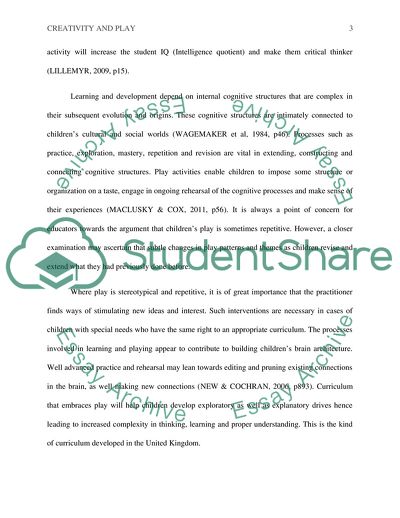Cite this document
(Creativity and Play Report Example | Topics and Well Written Essays - 1750 words - 1, n.d.)
Creativity and Play Report Example | Topics and Well Written Essays - 1750 words - 1. https://studentshare.org/education/1797924-creativity-and-play
Creativity and Play Report Example | Topics and Well Written Essays - 1750 words - 1. https://studentshare.org/education/1797924-creativity-and-play
(Creativity and Play Report Example | Topics and Well Written Essays - 1750 Words - 1)
Creativity and Play Report Example | Topics and Well Written Essays - 1750 Words - 1. https://studentshare.org/education/1797924-creativity-and-play.
Creativity and Play Report Example | Topics and Well Written Essays - 1750 Words - 1. https://studentshare.org/education/1797924-creativity-and-play.
“Creativity and Play Report Example | Topics and Well Written Essays - 1750 Words - 1”. https://studentshare.org/education/1797924-creativity-and-play.


